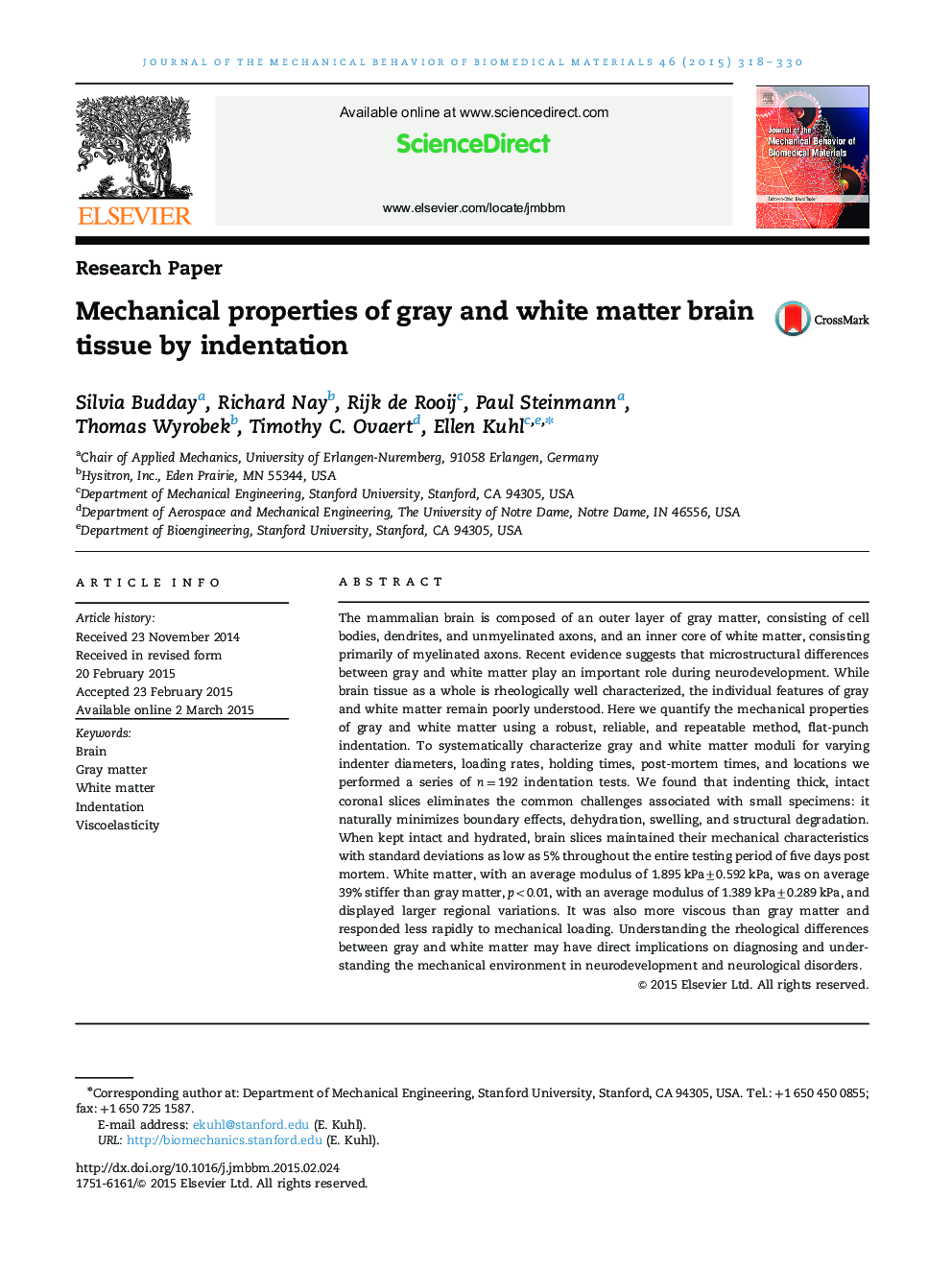| کد مقاله | کد نشریه | سال انتشار | مقاله انگلیسی | نسخه تمام متن |
|---|---|---|---|---|
| 810641 | 1469099 | 2015 | 13 صفحه PDF | دانلود رایگان |
• Differences between gray and white matter may be critical in neurodevelopment.
• We quantified the mechanical properties of gray and white matter using indentation.
• We established a robust testing protocol and indented n=192n=192 coronal brain slices.
• Slices maintained their mechanical characteristics for five days post mortem.
• We identified elastic moduli of 1.895 kPa for white and 1.389 kPa for gray matter.
The mammalian brain is composed of an outer layer of gray matter, consisting of cell bodies, dendrites, and unmyelinated axons, and an inner core of white matter, consisting primarily of myelinated axons. Recent evidence suggests that microstructural differences between gray and white matter play an important role during neurodevelopment. While brain tissue as a whole is rheologically well characterized, the individual features of gray and white matter remain poorly understood. Here we quantify the mechanical properties of gray and white matter using a robust, reliable, and repeatable method, flat-punch indentation. To systematically characterize gray and white matter moduli for varying indenter diameters, loading rates, holding times, post-mortem times, and locations we performed a series of n=192n=192 indentation tests. We found that indenting thick, intact coronal slices eliminates the common challenges associated with small specimens: it naturally minimizes boundary effects, dehydration, swelling, and structural degradation. When kept intact and hydrated, brain slices maintained their mechanical characteristics with standard deviations as low as 5% throughout the entire testing period of five days post mortem. White matter, with an average modulus of 1.895 kPa±0.592 kPa, was on average 39% stiffer than gray matter, p<0.01p<0.01, with an average modulus of 1.389 kPa±0.289 kPa, and displayed larger regional variations. It was also more viscous than gray matter and responded less rapidly to mechanical loading. Understanding the rheological differences between gray and white matter may have direct implications on diagnosing and understanding the mechanical environment in neurodevelopment and neurological disorders.
Figure optionsDownload high-quality image (330 K)Download as PowerPoint slide
Journal: Journal of the Mechanical Behavior of Biomedical Materials - Volume 46, June 2015, Pages 318–330
